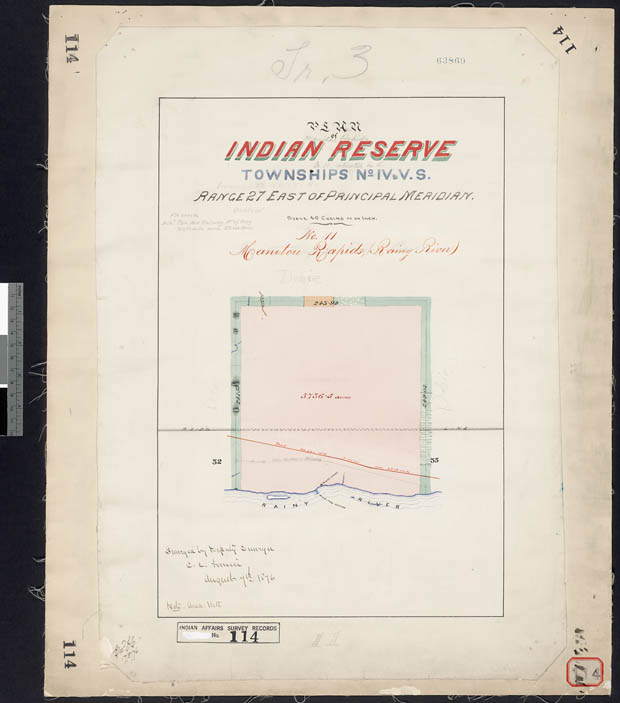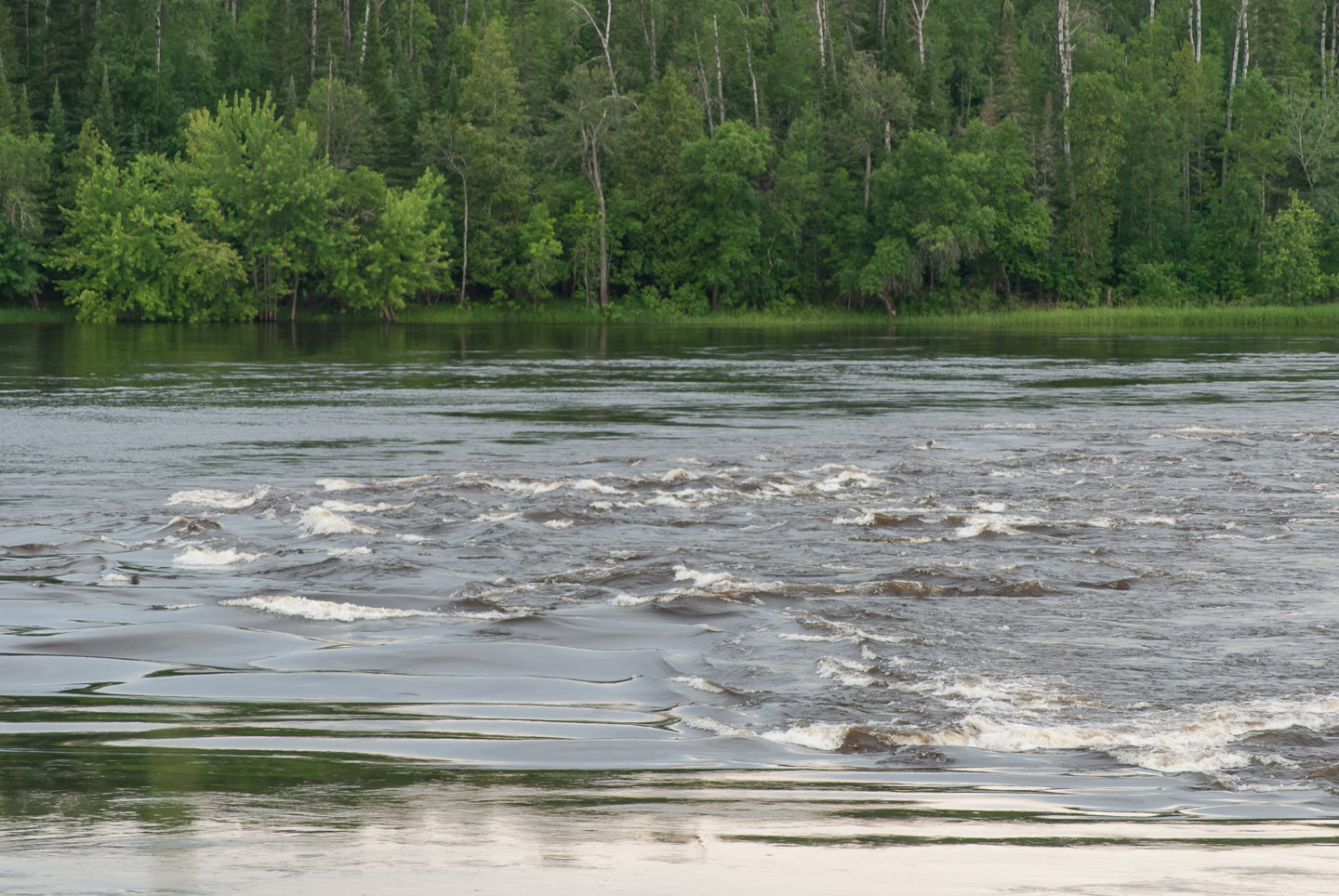Manitou Rapids

Manitou Rapids designated two adjacent Ojibwe reserves located on the north bank of the Rainy River, opposite of the rapids from which the reserves took their name and covering an area of 5,736 acres. Around 120 people resided at Manitou Rapids during the 1890s. Treaty 3 or the Manidoo Mazina’igan (“Spirit Paper” or “Sacred Document”), a signed agreement between regional Ojibwe Chiefs and the Crown, created Manitou Rapids along with the four other reserves along the Rainy River.
Hunting, fishing, wild rice gathering, and gardening were central to Manitou Rapids foodways. With increased white settlement, Ojibwe people also began to work as farm hands for nearby white settlers and in in lumber camps. In the 1890s, a government-funded day school on the reserve was staffed by the Anglican catechist Mr. Wood. Despite the presence of the Anglican Church, only a handful of the Ojibwe converted to Christianity.
In 1914 and 1915, the Canadian government appropriated the best farmland of Treaty 3, some 43,000 acres, for Euro-Canadian settlement. The government forcibly resettled the six Rainy River bands at Manitou Rapids, the only Rainy River reserve that the government did not close.
Today, the Manitou Rapids Ojibwe are part of the Rainy River First Nations, which is in a long-term process of buying back Ojibwe land. In 2005, the Rainy River First Nations and the Canadian government agreed to a $71 million land claim settlement that identified land for future reserve creation. Following a court order in February 2017, the governments of Ontario and Canada, together with the Rainy River First Nations, announced the creation of some 6,000 hectares of reserve land.

Sources
Animikii, Robert Horton. “A Seventh Fire Spark Preparing the Seventh Generation: What are the Education Related Needs and Concerns of Students from Rainy River First Nations?” Master’s Diss., Lakehead University, 2011.
Anishinaabe Nation Grand Council Treaty 3